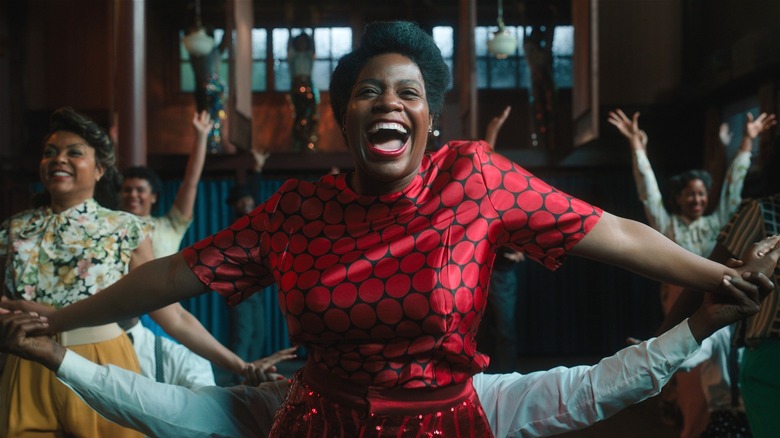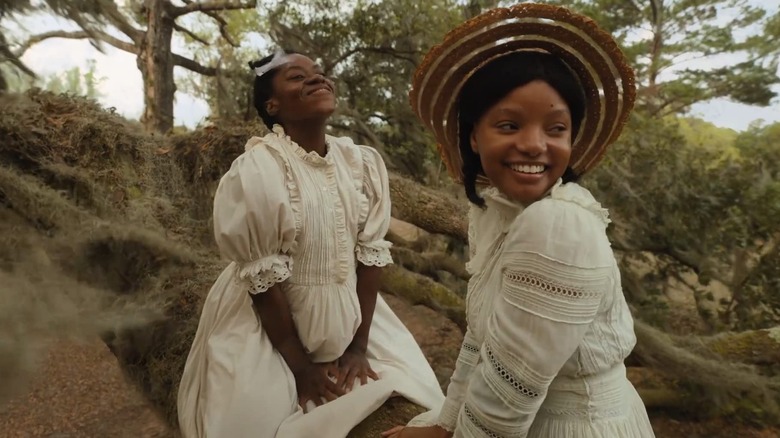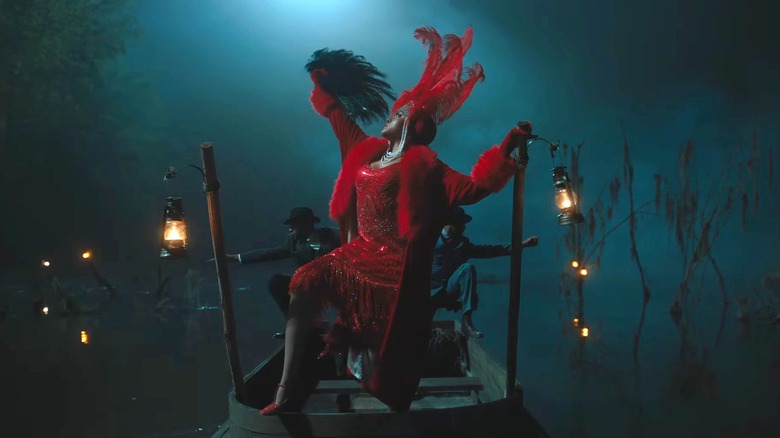The Color Purple Review: Songs In The Key Of Life
- Inventive, memorable visuals
- Amazing ensemble cast
- Very few of the musical numbers enhance the story
- The source material proves difficult for this runtime
The following article includes discussions of sexual assault and physical and sexual abuse.
Alice Walker's Pulitzer Prize-winning novel "The Color Purple" is a rich and complex text whose intricacies and subtleties have proven difficult to translate to the big screen. In an era when it was less common for Black filmmakers to tell their own stories within the studio system, no less a talent than Steven Spielberg himself was tasked with transforming Walker's powerful prose into images. For his troubles, the multiplex titan saw his work shut out at the Academy Awards, winning a sum total of zero of its 11 Oscar nominations.
Over 20 years later, the book found its way onto Broadway with a musical adaptation considered to be more faithful and better representative of the voices it intended to uplift. Now, filmmaker Blitz Bazawule has helmed a new cinematic interpretation splitting the difference between the two prior attempts, centering the show's original songs and dance numbers as a spectacle designed to counterbalance the film's heavy subject matter. Whether or not he has succeeded in delivering the definitive take on Walker's work feels beside the point. Regardless of its strengths and weaknesses as a literary and stage adaptation, "The Color Purple" is a potent delivery system for several staggering performances and many stirring visuals.
It remains a triumph for such a lauded Black story to be brought to life by Black storytellers with this level of scale and artistry. But as lively and entertaining as this difficult tale becomes in execution, the musical side of the equation feels out of balance.
Love, abuse, and chasing freedom
Spanning the first few decades of the 20th century, "The Color Purple" tells the life story of Celie, played by Phylicia Pearl Mpasi in her youth and R&B singer Fantasia Barrino as an adult. Celie is a young dark-skinned girl who, from the outset, is cursed by an endless procession of abuse and mistreatment. As an adolescent, she is molested and impregnated by the man she believes to be her father. Celie has only two comforts in this world: her sister Nettie (Halle Bailey) and the brief, abstract idea of motherhood. Neither comfort lasts.
First, her children are ripped from her arms, then she is sold into marriage to Mister (Colman Domingo), a scoundrel farmer with his own brood of motherless children. Mister picks up where Celie's father left off, beating her, using her for sex, and treating her like a slave. In Celie's absence, Nettie becomes their father's next target. But after coming to stay with Celie, Nettie rejects similar advances from Mister and is chased off the property in the rain, Celie's last vestige of love driven out of her life.
The years pass, and Celie's thankless existence only grows worse. She helps raise Mister's children, among them his eldest son, Harpo (Corey Hawkins), who elopes with a feisty, free-spirited woman named Sofia (Danielle Brooks). Harpo isn't as stubborn or malicious as his father and Sofia is nowhere near as subservient as Celie. Seeing this younger generation form a relationship more progressive and tender than their own, Mister and Celie both encourage Harpo to beat his young bride. The former because it's all he knows, and the latter borne of a wounded jealousy. But seeing Sofia refuse to take that sort of punishment opens Celie's eyes to the possibilities of a world where she can exist out from under a man's thumb.
In the aftermath of that epiphany, Celie meets Shug (Taraji P. Henson). She's a famous singer and Mister's ex, whom he is still obsessed with. She comes to stay with them, and her presence dulls Mister's abuse and provides Celie with her first real friend in years. Their relationship has a severe undercurrent of romantic longing and sexual attraction, but it also opens up an important piece of knowledge Mister has hidden from her: that Nettie is still alive and has found Celie's stolen children. Celie's journey to be free and reconnect with her family nicely dovetails with the slow evolution of Black life in America, with its trials and tribulations tethered to her own. It is an expansive and difficult story, but not one without its rapturous moments of celebratory reprieve.
If you or anyone you know has been a victim of sexual assault, help is available. Visit the Rape, Abuse & Incest National Network website or contact RAINN's National Helpline at 1-800-656-HOPE (4673).
Face the music
Outside of not being directed by a Black filmmaker, Steven Spielberg's 1985 adaptation of "The Color Purple" was met with two chief criticisms. One is that Spielberg, at that point in his career, lacked the subtlety and nuance to bring a story like this to life; he crafted a more saccharine and sentimental version of the tale than the one in Alice Walker's book. And two, he drastically undercut the sapphic nature of Celie and Shug's friendship. One would think, 30 years on, both of those issues would be mitigated by a new adaptation, but those critiques persist.
The decision to adapt this new version from the musical means that its two-and-a-half-hour runtime must share scenes of its already dense narrative alongside several song and dance sequences. But because those musical moments punctuate poignant instances of pathos with upbeat and exhilarating choreography and vocal performances, it still feels like a very dark and haunting story told in a manner that seems afraid of its own depth. Often, musicals will use breaking into song to better express complex emotions that simple back-and-forth dialogue might fail to articulate. However, most of the set pieces in "The Color Purple" feel ancillary to the effective work being done in its quieter, songless moments of drama.
Blitz Bazawule's work on Beyoncé's "Black Is King" offered a small preview of his bravura approach to the film's more fantastical sequences. He and cinematographer Dan Laustsen populate the screen in "The Color Purple" with gorgeous, evocative images. These visuals enhance the touching work from an ensemble that feels like an embarrassment of riches. Fantasia Barrino was likely chosen for the lead role because of her remarkable pipes, but she proves adept at breathing so much life into Celie without ever uttering a word. Danielle Brooks is a scene-stealer as Sofia, but it might be Colman Domingo's work as Mister that proves the most surprising. He had big shoes to fill, coming to the role after Danny Glover's iconic portrayal from the 1985 film, but he is able to find more nuance and range within Mister's villainy.
It's just hard to shake the feeling that this is a very interesting and engaging adaptation that would have been better if its momentum and focus wasn't repeatedly interrupted by the necessity to sing and dance. Perhaps in a straightforward drama, some of the novel's more fascinating elements, like its queerness and the way it tackles colorism and other issues within the Black community, could have been given more screen time.
"The Color Purple" arrives in theaters on December 25.


